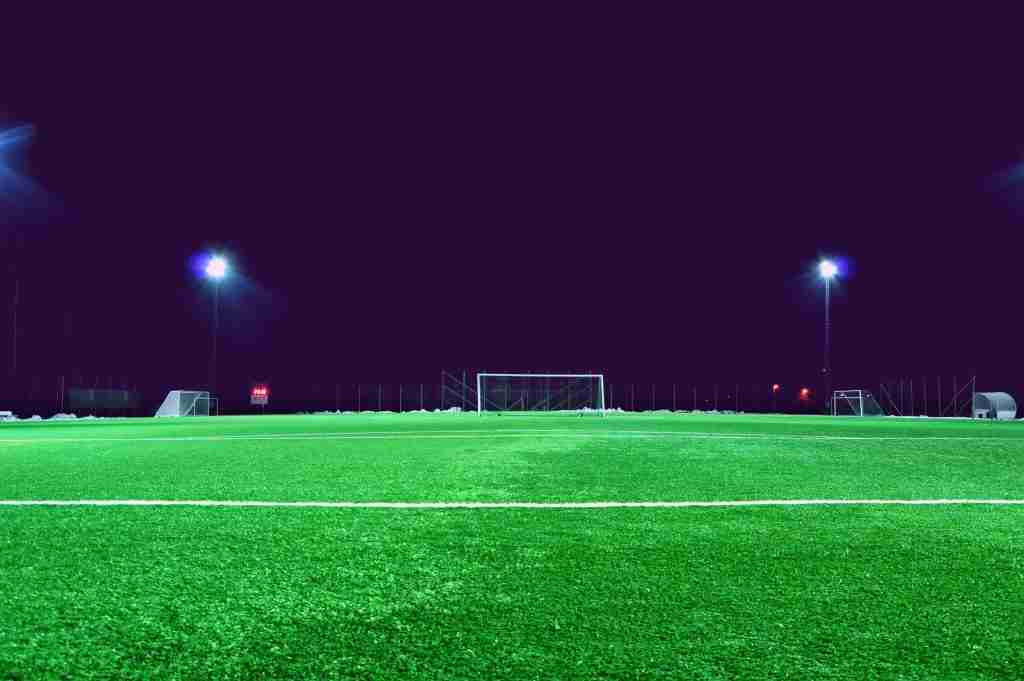The impact of altitude on soccer performance is a fascinating topic that has garnered a lot of attention in recent years. Imagine a team from a low altitude location steps onto a field high up in the mountains, where the air is thin and oxygen levels are lower. It’s no secret that altitude can have a significant effect on athletic performance, and soccer is no exception. From reduced endurance to decreased accuracy, there are several factors that come into play when it comes to the relationship between altitude and soccer. So, let’s dig deeper and explore the ins and outs of how altitude truly affects players on the soccer field.
Altitude and its Effects on Soccer Performance
The Science behind Altitude
Altitude refers to the elevation above sea level and it can have a significant impact on soccer performance. When playing at higher altitudes, the environment presents unique challenges to athletes due to the changes in oxygen levels. Understanding the physiological adaptations and effects of altitude is crucial for teams and players competing in high-altitude locations.
Changes in Oxygen Levels
One of the main factors that affect soccer performance at higher altitudes is the decrease in oxygen levels. As you ascend to higher altitudes, the air becomes thinner and contains less oxygen molecules per volume. This can lead to a decrease in the amount of oxygen available for the body to use during physical activity. The lower oxygen levels can result in decreased aerobic performance and may hinder an athlete’s ability to sustain high-intensity efforts over prolonged periods.
Effects of Altitude on Physical Performance
Altitude has a profound impact on various aspects of physical performance in soccer. Let’s delve into the cardiovascular adaptations that occur in response to altitude.
Cardiovascular Adaptations
Increased Heart Rate
One of the immediate cardiovascular adaptations to altitude is an increase in heart rate. When exposed to higher altitudes, your body tries to compensate for the reduced oxygen availability by increasing the heart rate. This allows for a higher volume of blood to be pumped to the working muscles, in an effort to maintain oxygen delivery. However, this increased heart rate can lead to feelings of fatigue and can negatively affect overall performance.
Changes in Blood Pressure
Altitude can also cause changes in blood pressure. Some individuals may experience increases in blood pressure due to the body’s attempt to maintain blood flow to vital organs. This can result in higher systemic vascular resistance and increased workload on the heart. It’s important for athletes to monitor their blood pressure at higher altitudes to ensure optimal health and performance.
Blood Vessel Dilation
To combat the challenges presented by altitude, your body undergoes various adaptations. One such adaptation is the dilation of blood vessels, particularly in the muscles. This process, known as vasodilation, helps to increase blood flow and oxygen supply to the working muscles. However, the effectiveness of this adaptation may vary among individuals, and some players may experience limited vasodilation, leading to decreased oxygen delivery and impaired performance.

Respiratory Adaptations
Increased Rate of Breathing
To cope with the lower oxygen levels, your body naturally increases the rate of breathing at higher altitudes. The increased respiratory rate helps to enhance oxygen uptake and delivery to the working muscles. However, this adaptation can lead to increased fatigue and a sensation of shortness of breath during physical exertion.
Changes in Oxygen Uptake
Altitude also affects oxygen uptake by the lungs. As you ascend to higher altitudes, the partial pressure of oxygen in the air decreases, making it more challenging for your lungs to extract oxygen from each breath. This can result in a lower rate of oxygen uptake and reduced oxygen availability for aerobic energy production. As a result, players may experience decreased endurance and heightened feelings of fatigue.
Effects on Lung Function
Another respiratory adaptation to altitude involves changes in lung function. Exposure to higher altitudes can lead to an increase in lung ventilation, allowing for greater oxygen exchange. However, this increased workload on the lungs can also result in respiratory discomfort and a higher risk of respiratory conditions such as bronchospasm or high-altitude pulmonary edema (HAPE). Athletes should take precautions and consult medical professionals for guidance to ensure optimal respiratory function at high altitudes.
Muscular Adaptations
Decreased Maximal Power Output
Altitude can have a significant impact on muscular performance. The decreased availability of oxygen and reduced aerobic capacity can result in a decrease in maximal power output. This means that athletes may experience difficulties in generating explosive movements, such as sprinting and jumping, which are essential in soccer. The lower oxygen levels can contribute to muscle fatigue and a decrease in overall power and speed.
Effects on Muscle Endurance
Altitude can also affect muscle endurance, which is crucial for soccer players who need to maintain high-intensity efforts throughout a match. Due to the limited oxygen availability, the muscles may fatigue more quickly, leading to a decrease in overall endurance. This can result in a decline in performance during extended periods of play or in matches played at high-altitude locations.
Impact on Muscle Recovery
Altitude can also hinder muscle recovery. The reduced oxygen levels and increased lactate production during physical activity at high altitudes can lead to delayed muscle recovery. This means that the body may take longer to repair damaged muscle fibers and remove metabolic waste products, which could potentially increase the risk of muscle soreness and decrease performance in subsequent matches or training sessions.

Impact on Cognitive Function
Decreased Concentration and Mental Alertness
Altitude can also affect cognitive function, including concentration and mental alertness. The decrease in oxygen availability can impact brain function, resulting in decreased focus and reduced attention span. This can have a profound effect on an athlete’s ability to make quick decisions, communicate effectively with teammates, and execute complex tactical strategies on the field.
Effects on Decision Making and Reaction Time
Altitude can impair decision-making abilities and reaction time, two crucial aspects of soccer performance. The reduced oxygen levels can delay cognitive processing, leading to slower decision-making and reaction times. This can be particularly challenging in high-speed situations and may result in missed opportunities or defensive errors, ultimately influencing the outcome of a game.
Psychological Factors
In addition to the physiological effects, altitude can also have psychological impacts on soccer players. The unfamiliarity of playing at higher altitudes, coupled with the physical challenges, can create feelings of anxiety and apprehension. It is important for athletes to mentally prepare themselves to overcome these psychological factors and remain focused on the task at hand.
Nutritional Considerations
Increased Energy Expenditure
Playing soccer at higher altitudes requires increased energy expenditure. The body needs to work harder to produce energy due to the reduced oxygen availability. This means that players may require a higher caloric intake to meet their energy demands and sustain performance levels. Proper nutrition planning, including consumption of carbohydrates and adequate protein, is essential to ensure optimal energy production and recovery.
Hydration Strategies
Altitude can also impact hydration needs. The lower humidity levels and increased respiratory rate can lead to greater fluid loss through respiration. Additionally, the higher altitude can cause increased urine output due to changes in the body’s fluid balance. Adequate hydration is crucial to prevent dehydration and maintain optimal performance. Players should focus on drinking water regularly and consider electrolyte replenishment to compensate for increased fluid losses.
Optimal Nutrient Intake
Proper nutrient intake is essential for soccer players competing at high altitudes. Carbohydrates are the primary fuel source for energy production during physical activity, making it important to consume adequate amounts to sustain performance. Additionally, protein intake is crucial for muscle repair and recovery. Athletes should also ensure they are consuming enough vitamins and minerals to support overall health and optimize performance.

Tactical and Strategic Considerations
Adapting Playing Style
In soccer, playing style and tactics may need to be adjusted when competing at higher altitudes. Due to the physiological challenges, teams may need to alter their game plan to accommodate for the decreased aerobic capacity and reduced power output. This may involve adopting a more possession-based style of play, focusing on shorter passes and controlled possession to conserve energy and minimize high-intensity efforts.
Changes in Game Pace
Altitude can also influence the pace of the game. The reduced oxygen availability may result in a slower overall game pace, as players may naturally conserve energy and avoid overly exerting themselves. This can impact the tempo of the match, requiring teams to adapt their strategies accordingly to maintain control and exploit potential opportunities.
Altitude-Adjusting Techniques
Teams and athletes competing in high-altitude locations often employ various altitude-adjusting techniques to minimize the negative effects. Some strategies include arriving at the location several days before the match to allow for acclimatization, utilizing simulated altitude training methods, or using supplemental oxygen during matches or training sessions. These techniques aim to enhance the body’s ability to adapt and perform more effectively at higher altitudes.
Training Strategies for Altitude
Pre-Acclimatization Methods
Pre-acclimatization methods play a crucial role in mitigating the effects of altitude on soccer performance. Athletes can undertake a period of acclimatization by spending time at higher-altitude locations before the competition. This allows the body to adapt to the lower oxygen levels and facilitate better performance upon arrival. Pre-acclimatization periods can range from a few days to several weeks, depending on individual needs and competition schedules.
Training Load Adjustments
Training load adjustments are necessary to account for the physiological challenges imposed by higher altitudes. Coaches and trainers should carefully design training programs that gradually increase intensity and duration to allow players to gradually adapt to the decreased oxygen availability. This approach can help minimize the risk of overexertion, injury, and performance decline.
Training Camps in High Altitude
Training camps held at high-altitude locations can provide athletes with an opportunity to undergo altitude training and further enhance adaptation to lower oxygen levels. By spending an extended period of time at higher altitudes, athletes can maximize their ability to utilize oxygen more efficiently, leading to improved physical performance when competing at high altitudes. Training camps also offer the chance to build team camaraderie and focus on specific areas of skill development.
Performance Enhancing Techniques
Altitude Masks and Hypoxic Training
Altitude masks and hypoxic training methods are sometimes used as performance-enhancing techniques in soccer. Altitude masks simulate the conditions of training at higher altitudes by restricting airflow and decreasing oxygen intake. Hypoxic training involves exercising in environments with reduced oxygen levels to stimulate physiological adaptations. However, the effectiveness of these techniques in improving soccer performance at high altitudes is a subject of debate and further research is needed to determine their efficacy.
Supplement Usage
To combat the challenges posed by altitude, some players may turn to supplements to enhance performance. These supplements often aim to improve oxygen utilization or provide additional support for adaptations at high altitudes. However, it is important to approach supplement usage with caution, as certain substances may be banned by sports governing bodies or have potential side effects. Athletes should consult with a qualified sports nutritionist or medical professional before incorporating any supplements into their routine.
Legal and Ethical Concerns
When discussing performance-enhancing techniques related to altitude, it is essential to consider legal and ethical concerns. Sports organizations have strict rules and regulations regarding the use of performance-enhancing substances or methods. It is crucial for athletes and teams to ensure they are abiding by these rules and engaging in fair play. Any performance-enhancing techniques should be carried out in accordance with the policies of relevant sports governing bodies.
Conclusion
Altitude presents unique challenges for soccer players, with effects ranging from decreased physical performance to impaired cognitive function. Understanding the physiological adaptations associated with altitude and implementing appropriate training and nutrition strategies can help athletes mitigate the negative impacts. Tactical adjustments, pre-acclimatization methods, and careful consideration of performance-enhancing techniques can further enhance soccer performance at high altitudes. By applying a comprehensive approach, players and teams can optimize their abilities and compete successfully in high-altitude locations.


